Well, someone else’s sponsors, actually.
We recently came into possession of this July 1976 issue of Popular Electronics, and scanned a few of the vintage ads– including a few from companies that you might recognize.




Well, someone else’s sponsors, actually.
We recently came into possession of this July 1976 issue of Popular Electronics, and scanned a few of the vintage ads– including a few from companies that you might recognize.
After our Tabletop Pong project, someone suggested that we should check out the Tomy Blip, a handheld game dating to 1977.
And so we did. We snagged one on eBay, and here it is: “Blip, the digital game.”
Blip is unlike any other handheld that I’ve played, and (as you’ll see) it’s quite a piece of engineering. In what follows, we give it a test drive, and then take it apart and see what makes it tick.
Continue reading What makes Blip tick?
Happy birthday to us! Evil Mad Scientist Laboratories is now three years old.
To celebrate, we’re rounding up our most interesting projects from this past year.
Quick projects and observations:

The monetary density of things
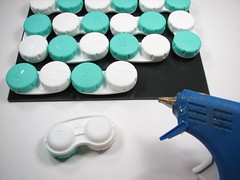
Contact Lens Case Small Parts Tray
Simple LED Projects:
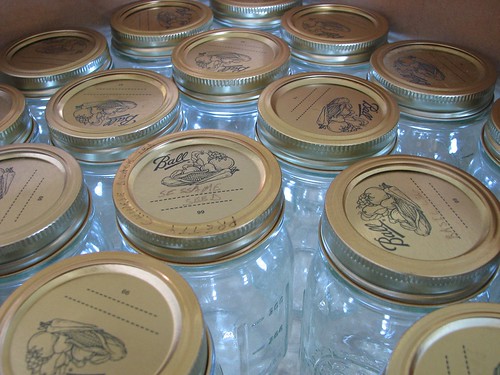
Quick, easy, temporary, and beautiful LED garden lights
Food Hacking:

South Indian Restaurant Menu Decoder

Improved Custom Message Hearts
CandyFab
Papercraft
Electronics Projects

Interactive LED Dining Table Circuit

Dark detecting jack-o’-lantern
Kit Projects
Crafty Projects
Microcontroller Projects
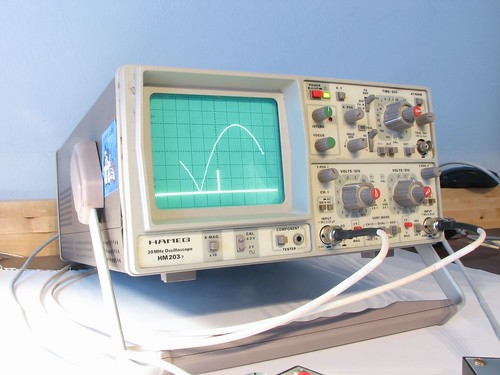
Tennis for Two, a video game from 1958
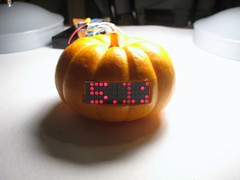
Scariest Jack-o’-Lantern of 2008
Geek Design
(Whew!)
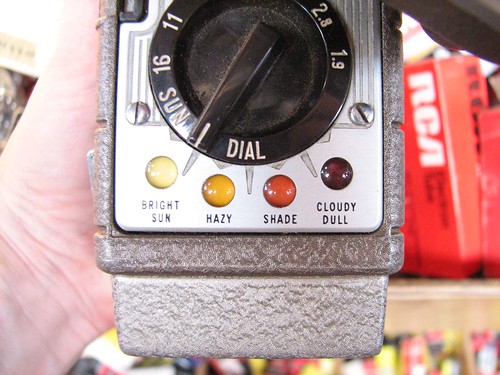
On our last trip to Urban Ore, we found this fantastic example of illustration as an element of industrial design. The “Sun Dial” on this 8mm Bell & Howell 333 wind-up movie camera is absolutely foolproof. If only all camera controls were so clear!
Here’s what the rest of the camera looks like. Sorry about the busy background–those pretty tube boxes are awfully distracting. You can see the normal, wide, and telephoto lenses here. Note that the red and yellow rectangles on the viewfinder correspond to the ring color on the lens choice as well. (Where’s my digital conversion for this thing, anyway?) |
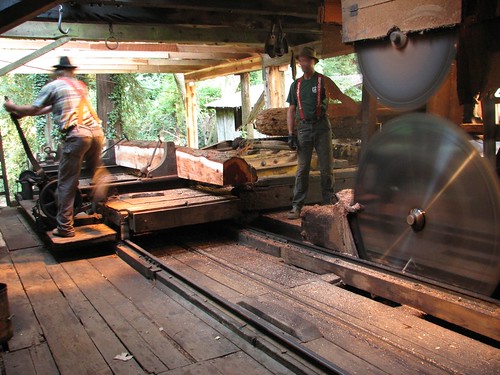 Sturgeon’s Mill is a steam-powered sawmill in northern California. I had the privilege of seeing it running recently. The next demonstration dates are Sept 20 & 21 and Oct 18 & 19. If you have any cause to be near Sebastopol, California on those dates, I highly recommend a visit.
Sturgeon’s Mill is a steam-powered sawmill in northern California. I had the privilege of seeing it running recently. The next demonstration dates are Sept 20 & 21 and Oct 18 & 19. If you have any cause to be near Sebastopol, California on those dates, I highly recommend a visit.
Continue reading A Visit to Sturgeon’s Mill, a Steam-powered Lumber Mill
In the year 1958– fourteen years before the 1972 debut of Pong— a physicist named William Higinbotham demonstrated a remarkable video game called Tennis for Two.
Higinbotham, head of the Instrumentation Division at Brookhaven National Laboratory, designed his game as an exhibit to improve what was an otherwise lackluster visitors’ day at the lab. Tennis for Two presented a tennis court– shown from the side– on an oscilloscope screen, where handheld controllers allowed the two players to toss the ball to each other. Each controller had two controls: a button and a knob. With the button, you could hit the ball at any time of your choosing when it was on your side of the net, and with the knob you could choose the angle at which the ball was hit.
The game was based on the best contemporary technology: analog electronic computers built out of op-amps, relays, and the occasional transistor. It took Higinbotham and his technicians several weeks to design and build the game. Of course, some things have changed over the last 50 years. Using convenient modern electronics, we have designed a functional and playable replica of the original that can be put together by a hobbyist in a couple of evenings. You can watch the video of our recreation on YouTube or embedded here:
Continue reading Resurrecting Tennis for Two, a video game from 1958
Saturday was the first Electronics Flea Market for 2008. We went, a little late as usual, but early for us. When we got our coffee and donuts at 8:30, there were already some vendors packing up; they had been there for hours and sold enough to call it a day. The weather was beautiful, and we all got sunburned, but we also took home a nice haul of goodies.
Above: the pretty stuff put in a cigar box for the benefit of photographers like me.
You know they love you when during spring cleaning they save the vintage Popular Mechanics magazines and ship them to you. They must really love me because I got twenty-one pounds from the 1960’s in the mail! I can’t wait to read them all, but so far I’ve only made it half-way through July 1962, which contains “Your Complete Concrete Guide” and “The Desperate Flight of Airtransit 13” among other treasures.
Last weekend we took a trip to Urban Ore in Berkeley, where I found an incredible gem: this “Fraction of an Inch Adding Machine.” It’s a simple to use device that lets you add any number of fractions– from 1/64 to 63/64– quickly, automatically, correctly, and without thinking about it.
As proudly proclaimed on the bezel itself, this calculator design is covered under patent Des. 169941, submitted in 1952, and granted a 14-year term in 1953. Forty years after the patent has expired, it’s painfully obsolescent, and yet remarkably charming. The design is so simple and so obvious in how it works, and yet… there’s something almost magical about it.
But enough talk. Want to play with one? Using our pdf pattern and some office supplies, you can make a working replica in 5-10 minutes and try it out yourself!
Continue reading Make your own 1952 Fraction-of-an-inch Adding Machine
Don’t you just love nixie tubes? They glow with a lovely neon color and have gorgeous stylized numbers– something you can’t get with a dot matrix– or even sixteen-segment LED or LCD display.
Recently, we disassembled a well-loved tube when there was a photogamer challenge to break something, and so we had a chance to peek inside and look at how they are made.
Warning: This article contains graphic images of the dissection of vintage electronics which may be disturbing to some viewers. (No working nixies were destroyed in the making of this article.)
Continue reading Nixie tube take-apart